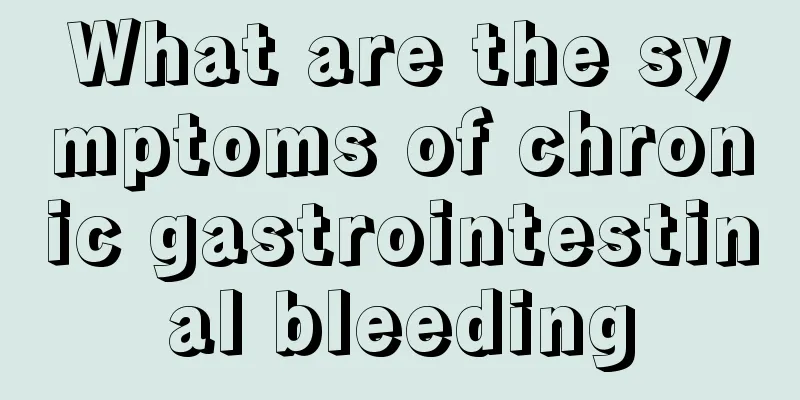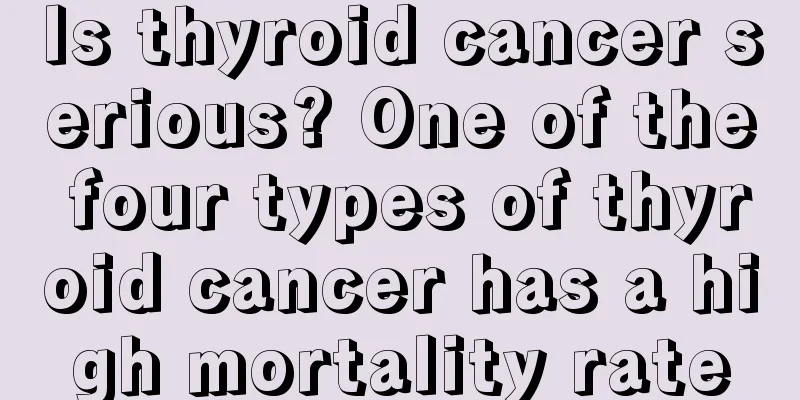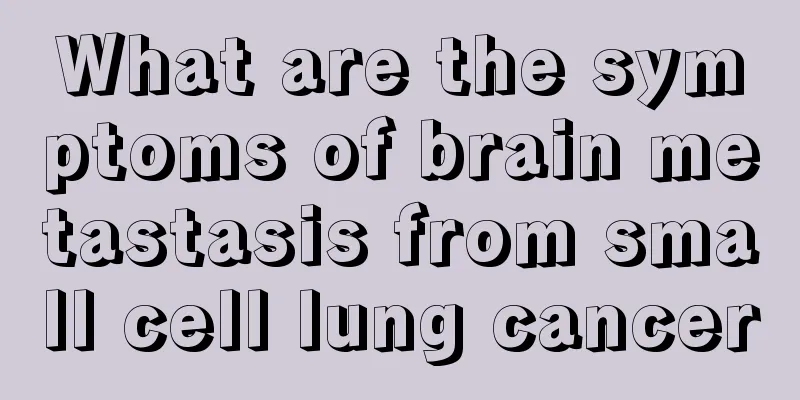What are the symptoms of chronic gastrointestinal bleeding

|
Chronic gastrointestinal bleeding is a very serious disease. The incidence rate is relatively high among the elderly. Once such a phenomenon occurs, you must go to the hospital for treatment, otherwise your own digestive ability will gradually decrease. Therefore, we need to have a detailed understanding of the symptoms of chronic gastrointestinal bleeding. Let us briefly understand its symptoms below! There are many symptoms of upper gastrointestinal bleeding in the elderly. Clinically, elderly people with upper gastrointestinal bleeding will experience dizziness and nausea. Elderly patients with upper gastrointestinal bleeding have symptoms of blackouts and syncope. 1. Bleeding 1. Vomiting blood (1) It can be seen in esophageal bleeding, gastric bleeding, duodenal bleeding, and jejunal bleeding after gastrojejunostomy. Vomiting of blood may occur when bleeding from the above sites is accompanied by vomiting, reflux or obstruction. (2) Color: Bleeding from esophageal varicose veins is usually dark red. If it mixes with gastric juice and is vomited out, it will be coffee-colored. Bleeding from the stomach or duodenum is vomited out and is coffee-colored. If the amount is large and cannot be fully mixed with gastric juice, it will be dark red or bright red. 2. Blood in the stool (1) Black stools: ① It can be seen in upper gastrointestinal bleeding, jejunal, ileal, or right colon bleeding that is slow to be discharged. ②Properties: Typically, the blood is black, shiny, sticky, and tarry. If the amount of bleeding is small and mixed with stool, it may appear as dark brown stool to varying degrees. The stool appears tarry when concentrated and dark red when dispersed by water. This condition can be seen in patients with heavy upper gastrointestinal bleeding, but can also be seen in lower gastrointestinal bleeding. (2) Dark red blood in stool: This is often seen in bleeding from the colon, jejunum, or ileum. It can also be seen when the amount of upper gastrointestinal bleeding is large and is discharged quickly. (3) Bright red blood in stool: ① Blood dripping or spurting after defecation, seen in anorectal bleeding ② A small amount of bright red blood in stool, or a small amount of bright red blood attached to the surface of stool, seen in anorectal or right colon bleeding ③ A large amount of bright red blood in stool, in addition to bleeding in the anus, rectum, and left colon, can also be seen in the right colon or even small intestine, when the amount is large and discharged quickly. (4) Mixed blood in stool: ① Jam-like stool, stool and blood are evenly mixed, which is more common in right-sided colon bleeding, such as amoebic dysentery; ② Mucous blood in stool or mucous pus and blood in stool, which is more common in left-sided colon bleeding, such as ulcerative colitis, bacillary dysentery, etc. (5) Positive fecal occult blood test: Slow, small amount of bleeding, no obvious change in the appearance of the stool, only the occult blood test is positive. In addition, sometimes even if there is a large amount of bleeding, it may stay in the digestive tract for several hours without being discharged, and there will be no vomiting of blood or blood in the stool, which can easily lead to misdiagnosis. (II) Circulatory system manifestations 1. Compensatory manifestations of the circulatory system may include tachycardia and other symptoms. When the blood is not discharged, it is easy to mistake it for a symptom of the original heart disease and delay treatment. 2. Manifestations of insufficient blood supply to important organs: The elderly often have underlying diseases such as cerebral arteriosclerosis and coronary heart disease. Bleeding causes insufficient blood supply to important organs such as the heart, brain, and kidneys. Angina pectoris, arrhythmia, dull heart sounds, dizziness, amaurosis, syncope, apathy, confusion, decreased urine volume, etc. may occur, which can easily lead to misdiagnosis when the blood is not discharged. 3. Manifestations of peripheral circulatory failure: Massive bleeding from the digestive tract causes a rapid decrease in circulating blood volume, which can lead to peripheral circulatory failure, with symptoms such as dizziness, palpitations, thirst, amaurosis, cold and clammy skin, collapsed surface veins, fatigue, listlessness, irritability, slow reaction, tachycardia, and low blood pressure. 4. Anemic heart changes Long-term and repeated gastrointestinal bleeding causes severe and persistent anemia, which can cause corresponding changes in the heart, such as heart enlargement. (III) Blood picture 1. Anemia after blood loss ① It can be seen in acute large-scale bleeding or long-term repeated bleeding ② After acute bleeding, anemia usually occurs more than 3-4 hours later ③ It is a normocytic normochromic anemia, and macrocytic anemia may occur temporarily ④ The reticulocyte count may increase within 24 hours of bleeding, and can be as high as 5%-15% 4-7 days after bleeding, and then gradually returns to normal. 2. White blood cell count increases: 2-5 hours after massive bleeding, the white blood cell count may exceed 10×109/L, and will return to normal 2-3 days after the bleeding stops. (IV) Others 1. Azotemia: ① Enterogenic, caused by the absorption of blood protein decomposition products. Blood urea nitrogen increases several hours after bleeding and reaches a peak within 24-48 hours. Most of the time, it does not exceed 6.7mmoI/L and returns to normal after 3-4 days. ② Prerenal, caused by a temporary decrease in renal blood flow, it can quickly return to normal after shock is corrected. ③ Renal, caused by renal failure accompanied by oliguria or anuria, and it is difficult to return to normal before renal failure is corrected. 2. After fever and massive bleeding, most patients may develop a low fever within 24 hours. 3. Depending on the cause and degree of bleeding, there may be complications such as acute renal failure, infection, and hepatic encephalopathy. Bleeding can also aggravate existing lesions of the heart, brain, kidneys and other organs, leading to corresponding clinical manifestations. The above are some symptoms of chronic gastrointestinal bleeding. It is often difficult for patients to treat after suffering from this type of disease. Therefore, the elderly must have a detailed understanding of the prevention measures and symptoms of chronic gastrointestinal bleeding. Once they find that they have the symptoms, they must go to the hospital for treatment. |
<<: How to treat stage 4 melanoma
>>: What are the clinical manifestations of acute enteritis?
Recommend
What is the effect of leg meridian massage?
Massage is a very traditional way of health prese...
What is the best way to treat liver cancer? What are the common treatments for liver cancer?
Treatment of liver cancer aims to eliminate the c...
What should I do if a piece of the inner part of my tooth falls off?
If you often eat hard food, the wear and tear on ...
Is constipation diarrhea?
Constipation is a very common health problem. Man...
What to do if your throat hurts from coughing? Here are some ways to stop the cough
Coughing is a protective reaction of our body. Ap...
What are the folk remedies for liver cancer that have the effect of promoting blood circulation and removing blood stasis
After liver cancer occurs, the liver function wil...
There are five main chemotherapy regimens for breast cancer
Commonly used breast cancer regimens use taxanes ...
Can urine occult blood of 10 heal itself?
For female friends, occult blood in urine is not ...
Improper treatment of lymphoma can cause great harm
If lymphoma is not treated carefully, it can caus...
Beware: Colon cancer can cause changes in patients' bowel habits!
Colon cancer is a disease with a high incidence r...
What is the function of tonsils?
People often hear about tonsil diseases. As we al...
Diet therapy for sinus tachycardia, daily conditioning should be like this
Sinus tachycardia caused by physiological factors...
How to improve shoulder pain among computer users
Many white-collar workers have to face the comput...
What are the examination items for testicular cancer patients
As there are more and more testicular cancer pati...
The crescent on finger and health
The half-moon on the finger refers to a white arc...









